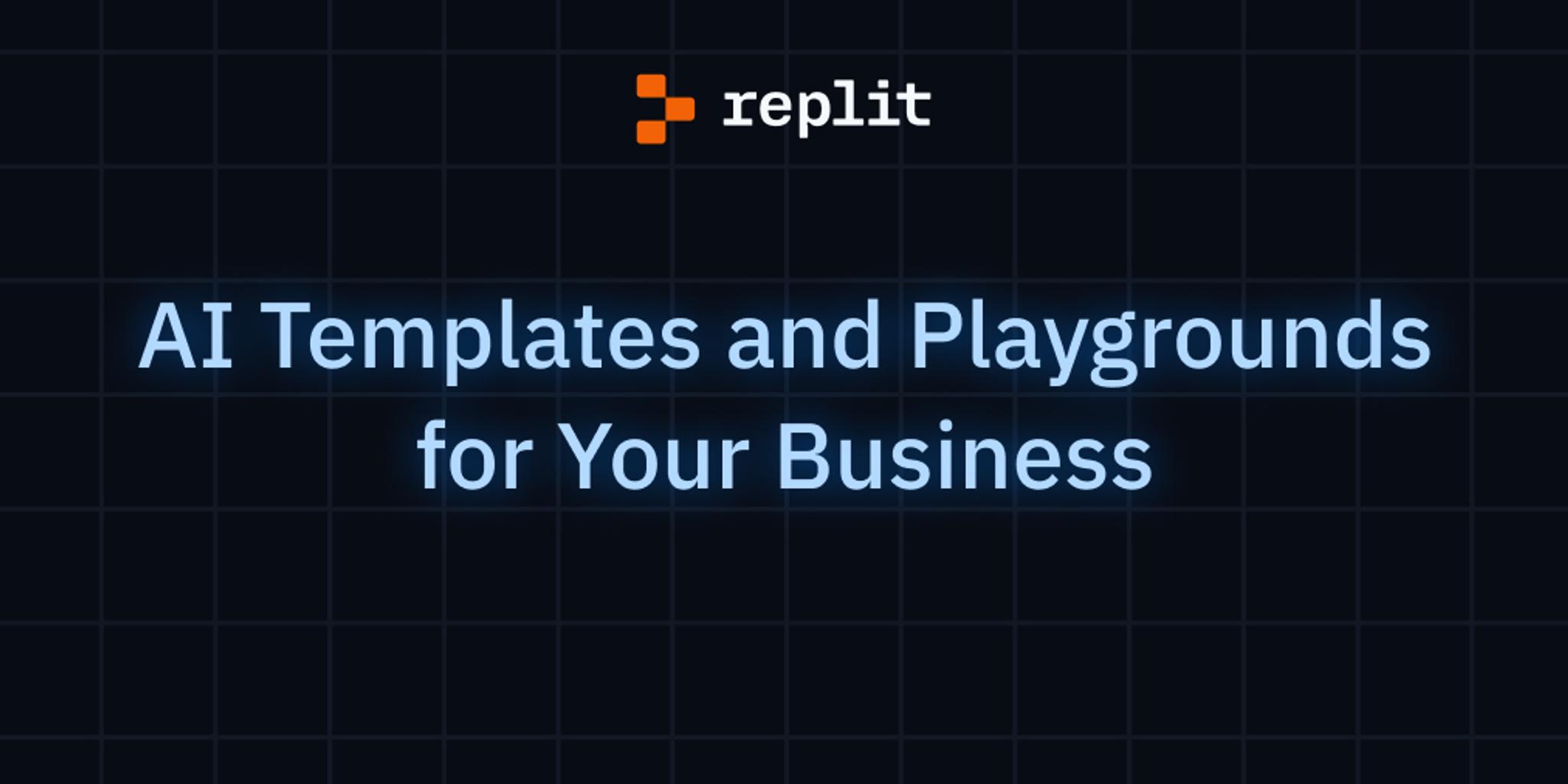Integrating the latest AI tools into your team can be a significant advantage. However, assessing these tools and setting them up to run can take time and effort. Whether you’re testing a new large language model or building a prototype with a vector database, chances are somebody has already developed a similar AI tool. Increasing developer productivity is a cornerstone of Replit, and we want to give you the tools to elevate your team and quickly incorporate the latest AI developer tools into your business.
Fork one of the AI templates below and customize it for your requirements. Once you’re finished, you can deploy it with just a few clicks from Replit and share it with your team. In this post, we’ll highlight some of the top templates on Replit that can help you explore and integrate the latest AI developer tools.
1. Gemini vs GPT-4
Easily integrate and compare the two top-performing LLMs with this starter code. Each of these templates contains the proper way to make API calls to Google’s Gemini API in JavaScript and Python.
Here are the templates for making a call to GPT-4. You can swap out the model for any available OpenAI model in line 34 of the Node.js template and line 23 of the Python template for further testing.
2. AI Support Agent
Combine your documentation and internal knowledge with GPT-4, and get an agent to walk your users through basic product issues and questions. This template uses OpenAI, Pinecone, and LangChain to vectorize the files you upload and provide context to the AI. Fork the template and follow the instructions in the README.md file to get started.
In this demo, we embedded Replit documentation, and our agent can answer questions about Replit features and common bugs.
Support chatbot
3. Chat with PDFs
Chat with any PDF document using this template.
In this demo, we chat with a PDF that outlines the perfect chocolate cake recipe. To chat with your documents, just swap out the files in /training-data/files/ and hit Run to embed the knowledge into GPT-4.
Chat with your PDF
4. Semantic Search with Weaviate
This Repl implements semantic or similarity search to find relevant data that isn't tied to specific keywords, but to the relevance of those words.
Once you insert your API keys and hit Run, the project connects with an instance of Weaviate, creates a “Question” class, and imports a dataset of question-answer pairs. Once the dataset is available to the Repl, it iterates through the dataset, stores it in Weaviate's vector database, and plots vectors for each entry, enabling semantic search.
Semantic search with Weaviate
5. RAG Bot using Weights and Biases and LLama Index APIs
This question-answering bot is built with the robust llama-index library and the intelligence of OpenAI's GPT-4. By referencing documentation, wandb source code, and code examples, WandBot helps new users onboard to W&B faster, and experienced users solve more advanced issues.

6. Meeting Transciber
Writing up notes and follow-up emails after a meeting can take time. This template uses OpenAI Whisper and other Python libraries to transcribe video meetings. After transcription, the code summarizes the transcript and writes up a summary with notes on the meeting. It also drafts a follow-up email referencing the next steps and action items made during the call.
Demo using a sample sales call
7. Speech-to-text Whisper API
Have a different use case for AI transcription? Start with the most fundamental building block with this template that showcases the proper way to call the Whisper API.
8. Visual retrieval - Food Discovery App
This demo by Qdrant allows you to use photo search to find dishes. The demo is based on the Wolt dataset of dishes. It contains over 2M images of dishes from different restaurants. The images are vectorized with the clip-ViT-B-32 model available in the Sentence-Transformers library.
Visual retrieval with Qdrant
9. Hugging Face Transformers
This template demonstrates how to use the transformers Python library to load up an ML pipeline to run inferences on Transformers models from Hugging Face. One way to use transformers is to include machine learning models in your Python projects.
Templates on Replit are more than shortcuts for developers; when paired with Replit AI, they are development launchpads for all members of your team. By leveraging templates, your team can simplify current business processes and pave the way for future growth.
For more information on templates, check out the complete list.
Want to get in touch with our team about how your company can leverage Replit for your internal work? Contact us at [email protected].






